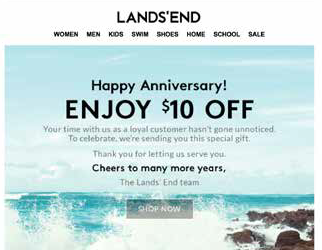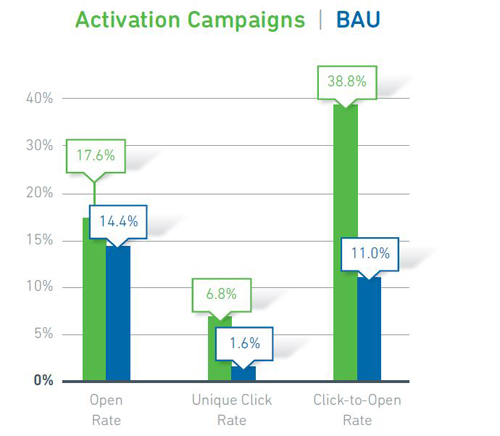3 Types of Emails You're Not Sending but Should

By Ivy Shtereva, Yes Lifecycle Marketing
Email marketing is one of the best ways to maintain relationships with online customers. However, as email marketing has become commonplace, shoppers now have to deal with overflowing inboxes that send many straight to the "unsubscribe" button. According to a recent survey by IBM and eConsultancy, only 21 percent of consumers consider communications from the average retailer "usually relevant." So what do shoppers want to hear?
To stay out of the trash folder, emails must be personalized and informed by user preferences and behavior. Trigger campaigns address this need by responding to specific actions and milestones in a consumer's relationship with a brand.
As a whole, triggered email campaigns based on life events and transactions significantly outperform business-as-usual emails. In fact, studies prove that triggers double the open and click-to-open (CTO) rates of general email messages and quadruple their unique click rates. Here are three effective yet underused tactics to consider from internal research, which includes data from 24 billion emails deployed using our platform:
Browse Abandon
Cart abandonment emails are already a mainstay of ecommerce remarketing strategies, but what about consumers who have looked around but haven't placed an item in their carts yet? Browse abandon emails target site visitors who have viewed product pages without beginning a conversion.
Only five percent of marketers have adopted browse abandon campaigns, so they present an opportunity to get ahead of the curve. They are also easy to implement because they are informed by the same data that powers abandoned cart emails. And they pay off: 6.4 percent of clicks on browse abandon messages turn into purchases.
Brands can use browse abandon messages, potentially coupled with a discount, to entice shoppers to revisit products and promote related items that might pique new interest. An example might be "Something you love just went on sale!" According to a survey by the E-tailing Group, 53 percent of customers appreciate personalized product recommendations, and browse abandon emails can be a great way to cross-sell or highlight other items.
To avoid overloading subscriber inboxes, marketers should establish strict criteria that ensure they are reaching customers with strong purchase intent. For example, send browse abandon emails to customers who consistently visit product categories or view several products at once.
Anniversary
Milestone triggers are successful because they strengthen the personal connection between a brand and its customers. Many brands have found success with obvious milestones like birthdays, but you can take this a step further by celebrating anniversaries of first purchases or subscriptions. Since the only data point required to implement anniversary emails is date of subscription, this strategy is simple and cost-effective.

Brands can effectively use these milestones to thank, excite and engage customers and offer exclusive, personalized incentives to drive conversions. Anniversary subject lines can range from a simple "It's your anniversary!" to a more specific "It's been a year since your first purchase. Let's celebrate!"
By significantly improving engagement with minimal additional effort, triggered campaigns that extend beyond welcome messages and purchase confirmations are no-brainers. Relevant triggered campaigns increase conversions, improve customer relationships, and ensure that less emails are deleted upon arrival.
Activation
Activation triggers are designed to engage new subscribers from the time of opting in by providing personalized content, exclusive offers and invitations to loyalty programs. An activation trigger subject line, for example, might be "Welcome to our loyalty program!" or "Your Rewards: Tips for Getting Started."
Activation emails can target different sub-segments of new subscribers. For example, many activation programs have a component aimed at new purchasers or subscribers who have recently opted in, but haven't opened or clicked on any of the messages they've received. In the latter case, marketers can get a bit more creative - using cheeky subject lines or clever copy and imagery can be very effective in capturing the attention of consumers who have tuned out immediately after subscribing.
The good news is that activation emails require little setup and can be triggered off of existing data points such as subscriber tenure, email activity or purchase history, making them an easy strategy for driving conversions. Overall, activation triggers generate over four times the unique click rates and three-and-a-half times the CTO of business as usual (BAU) campaigns (see image), making them worth the investment.

Ivy Shtereva is the director of marketing at Yesmail where she brings a background in software marketing and experience on the agency side working with major CPG and service industry clients.










